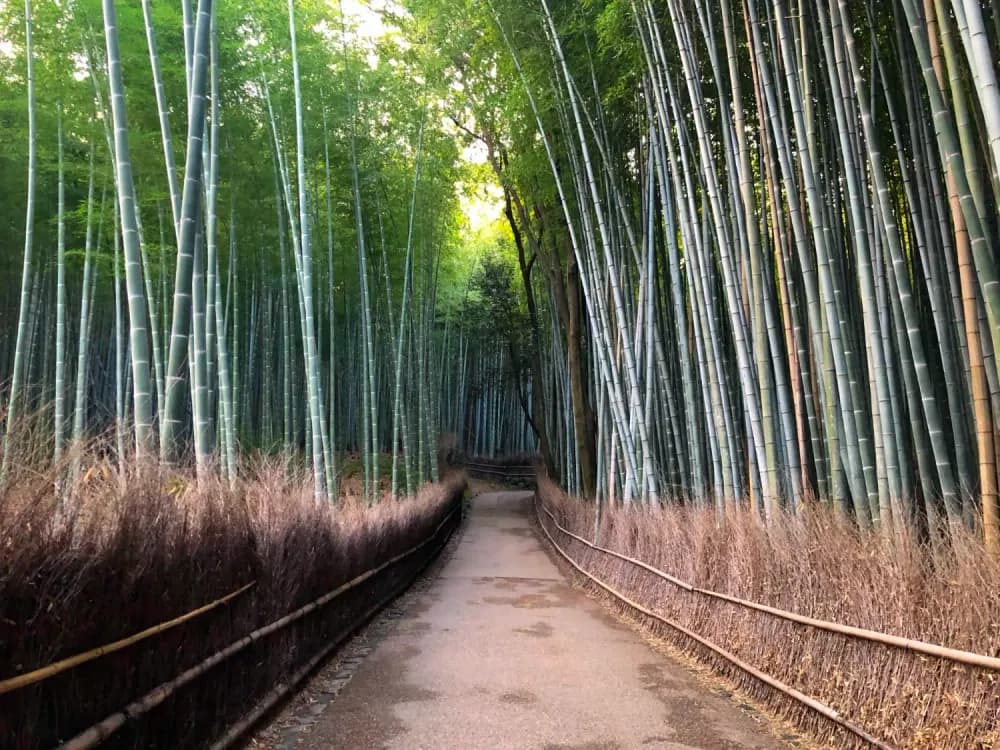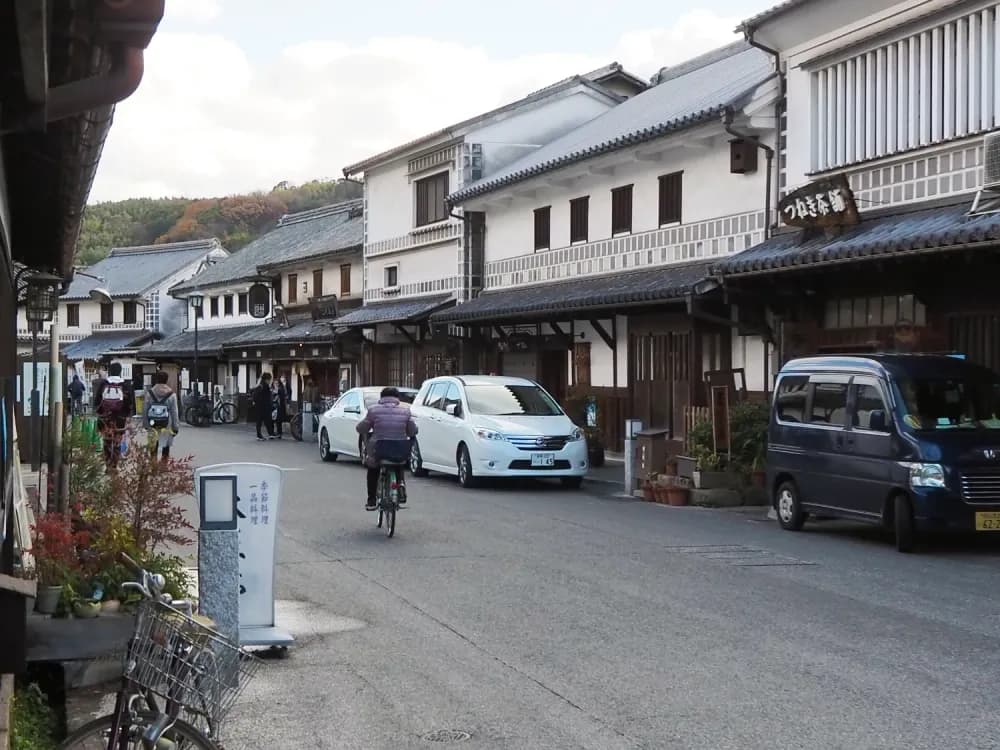Ultimate Kyoto 2 Day Itinerary
Condensing the Best of Kyoto in Two Days
Nature
Culture
Gourmet
Volume
Our Kyoto 2 Day Itinerary covers all the quintessential Kyoto destinations that we feel are the most memorable and enjoyable destinations to visit. The first day will focus on the Arashiyama (嵐山) area, famous for its bamboo grove (嵐山 竹林の小径, Arashiyama Chikurin-no-shōkei), and the beautiful Katsura River (桂川, Katsura-gawa). The second day will focus on the Higashiyama (東山) area, with its traditional stone-paved streets lined with wooden shops on both sides as well as the iconic Fushimi Inari Shrine with its thousand torii (鳥居) gates.
Concept
The Best Guide to Comprehensively Cover Japan's Ancient Capital
Essential Kyoto Itinerary
As the longest of Japan’s former capital cities (日本の元首都, Nihon no Moto Shūto), Kyoto (京都, Kyōto) is often the city that comes to mind when tourists talk about experiencing a taste of old Japan. The city has many stunning neighborhoods, traditional temples, and great food options as well. In particular, the Arashiyama (嵐山) and Higashiyama (東山) areas of Kyoto are the two areas that we highly recommend checking out when you’re here.
Kyoto also has its detractors though, as the massive influx of tourists means that the streets and attractions might feel too crowded and touristy to be an enjoyable experience. If you’re looking for a taste of old school Japan that is not as crowded, Kanazawa (金沢), Takayama (高山) and Kurashiki (倉敷) are also good alternative destinations that you can consider.
Highlights on this Kyoto 2 Day Itinerary
The Arashiyama district is located to the west of central Kyoto, and is an especially popular domestic tourism destination. It has garnered international fame for the Arashiyama Bamboo Forest, and has plenty of shops and sights to keep you entertained.
+ See More
The Arashiyama Bamboo Grove has become one of Kyoto’s most iconic sights, alongside the torii (鳥居) gates of the Fushimi Inari Shrine. This pedestrian path is lined with lush bamboo that stretch out for as far as the eye can see on either side. Of course, with its popularity, one can expect large crowds in the area as well, but that still doesn’t take away the sense of scale and awe from the grove.
+ See More
Kiyomizudera Temple is one of Kyoto’s most famous temples (寺, Tera), due to its iconic architecture where the entire main temple building sits atop a wooden stage that props it up into the air like stilts. Said to be founded in 780, Kiyomizudera was named after the Otowa Falls whose site the temple was built on.
+ See More
The Higashiyama District is one of the best places to feel as if you’ve been taken back to old Kyoto. The streets are lined with traditional machiya (町家, Traditional wooden townhouse) on both sides, filled with bustling shops that evoke the atmosphere of an area that has been serving merchants and visitors for centuries.
+ See More
The Fushimi Inari Taisha is one of Kyoto’s most iconic shrines (神社, Jinja), with its endless torii (鳥居) gates lined up one after another, making for an unforgettable sight. The shrine worships the Shinto god, Inari (稲荷, God of foxes, fertility, rice, and agriculture), the god of rice, and kitsune (狐, Fox) are thought to be Inari’s messengers. As such, you’ll find many kitsune statues throughout the shrine, some carrying a key in their mouth for the rice granaries.
+ See More
The Gion district of Kyoto is famous for being one of Japan’s most well-known hanamachi (花街, geisha districts, lit. flower town), and also for the machiya (町家, Traditional wooden townhouse) that line its streets. While the Gion district is large, and much of it is modern, there are two preserved districts that still maintain the atmosphere of yesteryear Kyoto: the Shirakawa area, and the Hanami-koji area.
+ See More
Kyoto 2 Day Itinerary
Kyoto has some of the most stunning riverside views in Japan. Our favorite neighborhood in Kyoto, Arashiyama is typically less-crowded than Kyoto’s favorite attractions. Located next to the Katsura River (桂川, Katsura-gawa), making for great scenic shots. Plenty of attractions, shops, and restaurants in the area makes it a great place to discover on foot.
At night, we'll head to the Kamo River (鴨川, Kamo-gawa) in central Kyoto, strolling down the moonlit river.
If there’s one neighborhood that you have to visit in central Kyoto, then it’s got to be the Higashiyama (東山) district. The district consists of stone-paved roads, wooden buildings and shops on both sides of the street, all leading up to the UNESCO World Heritage Site (世界遺産, Sekai Isan), the Kiyomizudera Temple (清水寺, Kiyomizu-dera) located atop a wooden stage.
Before heading to Higashiyama though, we’ll also check out the famed Fushimi Inari Shrine with its thousand torii (鳥居) gates, and the Nishiki Market (錦市場, Nishiki-ichiba), also known as Kyoto’s kitchen.
Welcome to Japan's Ancient Capital
There's no doubt that Kyoto is one of the most popular Japanese cities, because of the traditional vibes it exudes from the multitude of machiyas (町家, Traditional wooden townhouse) and shrines (神社, Jinja) around. A walk through the Higashiyama District (東山) can truly be quite magical, as if you've been taken back in time.
There's also just so much to see and do in the city, even in the Arashiyama (嵐山) area alone, there's just so much to explore. There are always new little shops and discoveries that you find, like Saganoyu (嵯峨野湯), an amazing cafe located in an old sento (銭湯, Sentō, Public Bath).
That being said, for some Kyoto's crowdedness and over-tourism might be a large turn-off. We can definitely understand why. It's hard to appreciate the beauty of Higashiyama, when you're constantly stuck trying to push your way through a crowd, or just stuck in back to back human traffic. Some people might also feel like Kyoto is nothing more than a temple pilgrimage, just going to one temple after another, and that might also be very true.
If you really like the traditional vibes and atmosphere of Kyoto, but want to avoid the crowds, there are definitely other places in Japan that you can also consider heading to.
Kanazawa has a lovely machiya (町家, Traditional wooden townhouse) district with plenty of shops that have been refurbished into selling modern crafts and goods, and has half the crowds of Kyoto. Not to mention, there's plenty of cafe and delicious seafood in the area too.
Kurashiki is much smaller, like a day-trip or half-day destination, but it has a very unique vibe. Apart from the beautiful machiya (町家, Traditional wooden townhouse)-lined streets, it also has several Roman-style buildings from the Meiji Era (1868-1912, 明治時代, Meiji-jidai). Most interesting would be the canal that flows through the center of the district, giving it a very iconic look and vibe that you'll hardly find elsewhere.
Slightly further out, you could also consider checking out Takayama (高山) and Kinosaki Onsen (城崎温泉).
Takayama is located in the Japanese Alps (高山), and is definitely less developed than many other major cities. However, this charm of only having low-rise buildings together with a stunningly preserved historical area (三町筋, San-machi-suji), give it a very unique old-school mountain town vibe.
Kinosaki Onsen has a few direct Limited Express trains from Kyoto, and it's a great place if you want to experience staying in a ryokan (旅館, Japanese inn). What makes it different from a big city ryokan is that you can easily rent yukata (浴衣) for free as you stroll down the town and hop from onsen (温泉, Hot Spring) to onsen. The town just has a great vibe and atmosphere that we would highly recommend.
So yes, while Kyoto is widely-loved (and also avoided for some), there's many other places that you can also check out and explore if you enjoy the traditional Japanese vibes of Kyoto!
You Might Also Be Interested In:
© 2023 Ki Creative. All Rights Reserved.
Due to changing circumstances, readers are advised to do their own additional research. All information on this site is purely for reference only.
Privacy









